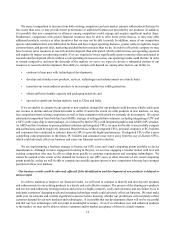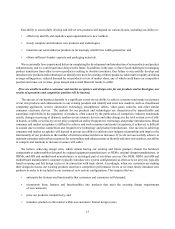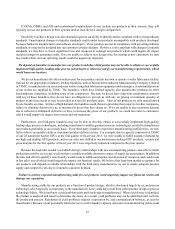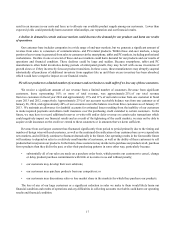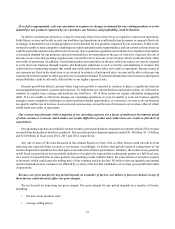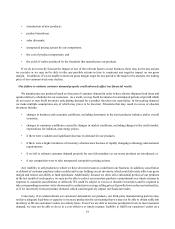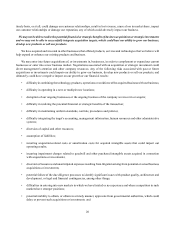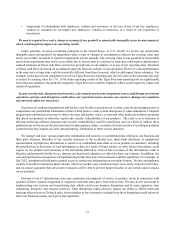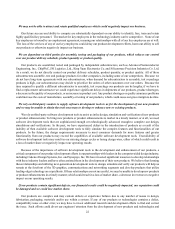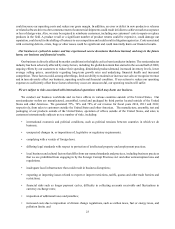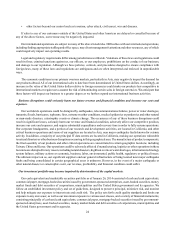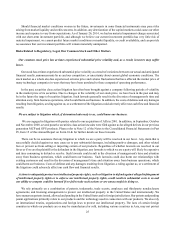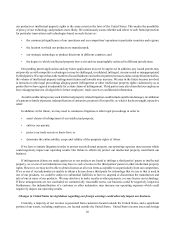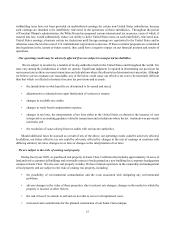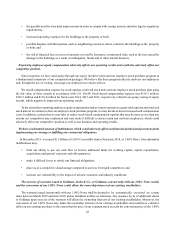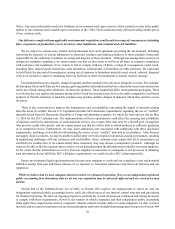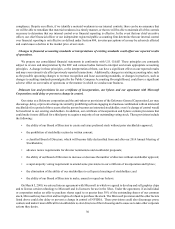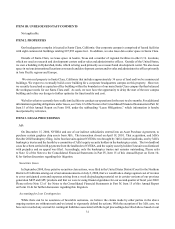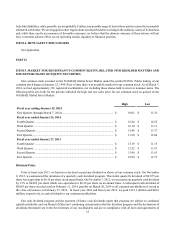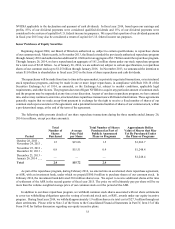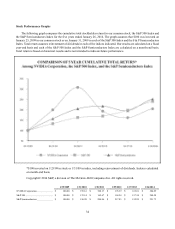NVIDIA 2013 Annual Report Download - page 168
Download and view the complete annual report
Please find page 168 of the 2013 NVIDIA annual report below. You can navigate through the pages in the report by either clicking on the pages listed below, or by using the keyword search tool below to find specific information within the annual report.24
• other factors beyond our control such as terrorism, cyber attack, civil unrest, war and diseases.
If sales to any of our customers outside of the United States and other Americas are delayed or cancelled because of
any of the above factors, our revenue may be negatively impacted.
Our international operations are subject to many of the above listed risks. Difficulties with our international operations,
including finding appropriate staffing and office space, may divert management's attention and other resources, any of which
could negatively impact our operating results.
Legal and regulatory requirements differ among jurisdictions worldwide. Violations of these laws and regulations could
result in fines; criminal sanctions against us, our officers, or our employees; prohibitions on the conduct of our business;
and damage to our reputation. Although we have policies, controls, and procedures designed to ensure compliance with
foreign laws, many of these laws and regulations are ambiguous and are often interpreted and enforced in unpredictable
ways.
The economic conditions in our primary overseas markets, particularly in Asia, may negatively impact the demand for
our products abroad. All of our international sales to date have been denominated in United States dollars. Accordingly, an
increase in the value of the United States dollar relative to foreign currencies could make our products less competitive in
international markets or require us to assume the risk of denominating certain sales in foreign currencies. We anticipate that
these factors will impact our business to a greater degree as we further expand our international business activities.
Business disruptions could seriously harm our future revenue and financial condition and increase our costs and
expenses.
Our worldwide operations could be disrupted by earthquakes, telecommunications failures, power or water shortages,
tsunamis, floods, hurricanes, typhoons, fires, extreme weather conditions, medical epidemics or pandemics and other natural
or man-made disasters, catastrophic events or climate change. The occurrence of any of these business disruptions could
result in significant losses, seriously harm our revenue and financial condition, adversely affect our competitive position,
increase our costs and expenses, and require substantial expenditures and recovery time in order to fully resume operations.
Our corporate headquarters, and a portion of our research and development activities, are located in California, and other
critical business operations and some of our suppliers are located in Asia, near major earthquake faults known for seismic
activity. In addition, a majority of our principal IT data centers are located in California, making our operations vulnerable
to natural disasters or other business disruptions occurring in this geographical area. The manufacture of product components,
the final assembly of our products and other critical operations are concentrated in certain geographic locations, including
Taiwan, China and Korea. Our operations could be adversely affected if manufacturing, logistics or other operations in these
locations are disrupted for any reason, including natural disasters, high heat events or water shortages, information technology
system failures, military actions or economic, business, labor, environmental, public health, regulatory or political issues.
The ultimate impact on us, our significant suppliers and our general infrastructure of being located near major earthquake
faults and being consolidated in certain geographical areas is unknown. However, in the event of a major earthquake or
other natural disaster or catastrophic event, our revenue, profitability and financial condition could suffer.
Our investment portfolio may become impaired by deterioration of the capital markets.
Our cash equivalent and marketable securities portfolio as of January 26, 2014 consisted of cash and cash equivalents,
commercial paper, mortgage-backed securities issued by government-sponsored enterprises, asset-backed securities, money
market funds and debt securities of corporations, municipalities and the United States government and its agencies. We
follow an established investment policy and set of guidelines, designed to preserve principal, minimize risk, and monitor
and help mitigate our exposure to interest rate and credit risk. The policy sets forth credit quality standards and limits our
exposure to any one issuer, as well as our maximum exposure to various asset classes, and a variety of financial instruments,
consisting principally of cash and cash equivalents, commercial paper, mortgage-backed securities issued by government-
sponsored enterprises, asset-backed securities, money market funds and debt securities of corporations, municipalities and
the United States government and its agencies.


